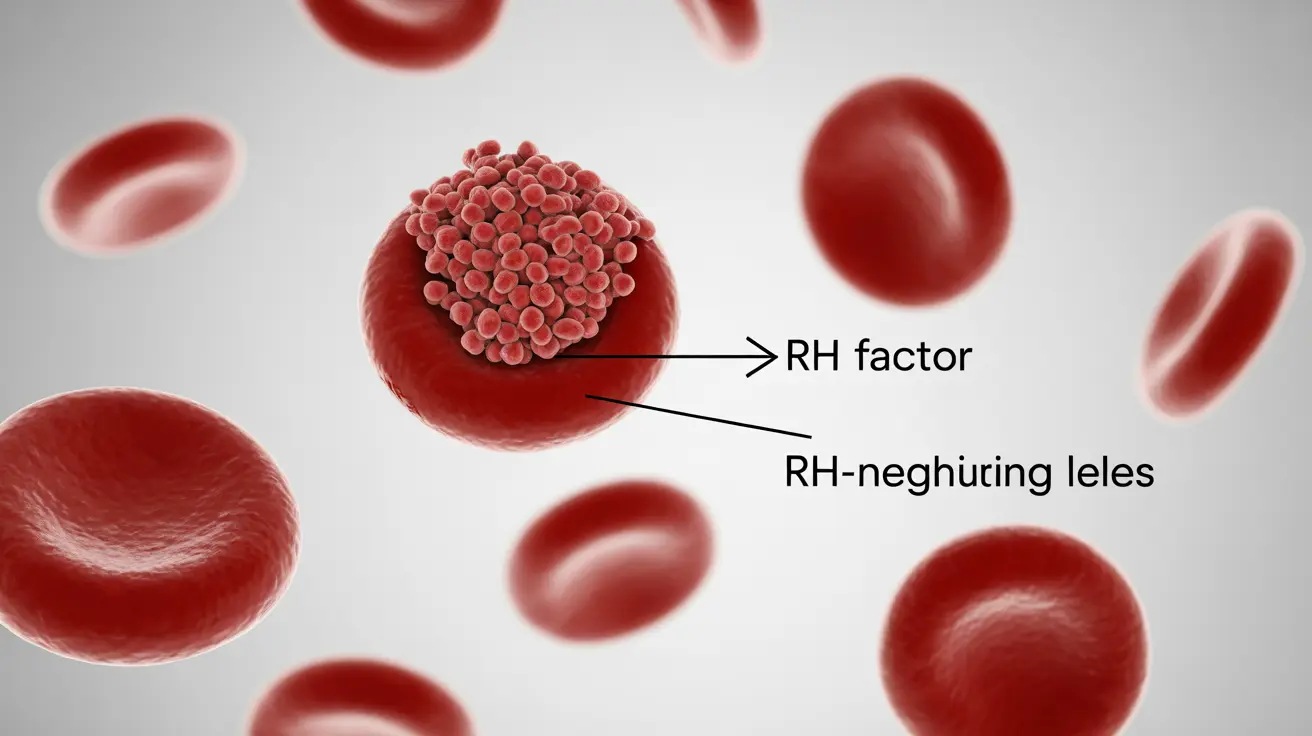The Rh factor is a crucial protein found on the surface of red blood cells that plays a vital role in blood type classification and medical care. Understanding whether your blood lacks the Rh factor is essential for safe blood transfusions and managing pregnancy-related risks.
When blood testing reveals an absence of the Rh factor, it's designated as "Rh-negative" and is indicated by adding a minus sign (-) after the blood type, such as A-, B-, O-, or AB-. This knowledge is particularly important for healthcare providers and patients alike, as it impacts various medical decisions and treatments.
What Is the Rh Factor and How Is It Identified?
The Rh factor is an inherited protein that appears on the surface of red blood cells in approximately 85% of the population. Medical professionals identify the presence or absence of the Rh factor through specific blood tests that look for this protein marker.
When blood tests indicate a lack of the Rh factor, it's documented in several ways:
- A negative symbol (-) after the blood type
- The term "Rh-negative" in medical records
- Laboratory results showing "Rh factor: Negative"
- Documentation using "D negative" (D being the main Rh antigen)
Clinical Significance of Rh-Negative Blood
Impact on Blood Transfusions
People with Rh-negative blood must receive Rh-negative blood products to prevent potentially serious transfusion reactions. This requirement makes matching blood types particularly important in emergency and planned medical procedures.
Pregnancy Considerations
The most significant medical concern regarding Rh factor occurs during pregnancy when an Rh-negative mother carries an Rh-positive baby. This situation requires careful monitoring and preventive treatment to protect both mother and child.
Prevention and Management Strategies
Healthcare providers implement several strategies to manage Rh factor-related concerns:
- Regular blood type screening during pregnancy
- Administration of RhoGAM shots for Rh-negative pregnant women
- Careful cross-matching before blood transfusions
- Documentation of Rh status in medical records
Frequently Asked Questions
What does it mean for blood to lack the Rh factor, and how is this indicated in medical tests?
When blood lacks the Rh factor, it means the red blood cells don't have the Rh protein on their surface. This is indicated in medical tests through specific antibody testing and is marked with a negative symbol (-) after the blood type designation.
How does Rh incompatibility affect pregnancy, and what are the potential risks for the baby?
Rh incompatibility during pregnancy can cause the mother's immune system to produce antibodies against the baby's blood cells if the baby is Rh-positive. This can lead to hemolytic disease of the newborn, potentially causing anemia, jaundice, or more serious complications.
What are the symptoms or complications if someone with Rh-negative blood receives Rh-positive blood?
If someone with Rh-negative blood receives Rh-positive blood, they may experience a severe transfusion reaction including fever, chills, back pain, and in serious cases, kidney failure or shock. This reaction occurs because their immune system attacks the foreign Rh-positive blood cells.
How can Rh-negative mothers prevent incompatibility and protect their babies during pregnancy?
Rh-negative mothers can protect their babies by receiving RhoGAM injections at around 28 weeks of pregnancy and within 72 hours after giving birth if the baby is Rh-positive. This prevents the mother's immune system from developing antibodies against Rh-positive blood.
Why is knowing one's Rh factor important for blood transfusions, and what are the implications for receiving or donating blood?
Knowing your Rh factor is crucial for safe blood transfusions because Rh-negative individuals must receive Rh-negative blood to prevent potentially dangerous transfusion reactions. This knowledge also helps ensure appropriate blood donation matching and medical care during emergencies.




